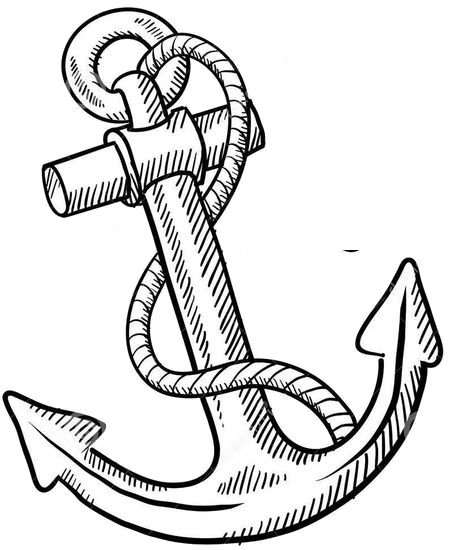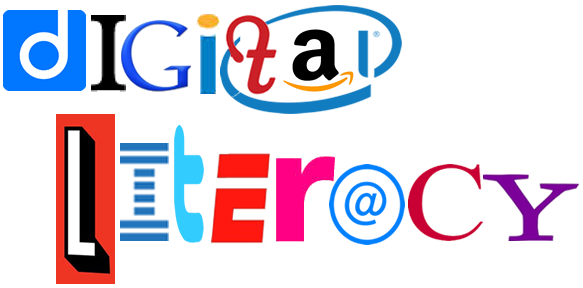Welcome to Curriculum & Syllabus Design, which is, as the name suggests, a course about designing both syllabi and curricula for doctoral (and perhaps master's) level students. As noted elsewhere, students in this course are required to have an English level of TOEFL (iBT) 90 and/or IELTS 6.5.
Please be aware that this course will be conducted online using Zoom and two LMS platforms, my webpage and the Rikkyo system. Details of our Zoom meeting are available on the Rikkyo LMS.
In order to examine the principles of curriculum and syllabus design, in this course we will examine topics such as elements of syllabus and curriculum design, needs analysis, environment analysis, materials development, assessment, and current topics in syllabus and curriculum design.
If you would like (for some inane or perhaps insane reason), here is the course syllabus for your reading pleasure. Of course, I reserve the right to amend it, so please treat this as a guideline.
As you will soon understand, I eschew textbooks in favor of providing a litany of handouts that suit my purposes. As such, we have no textbook. Class material will be available in both Dropbox and Google Drive; feel free to download, save, print, or otherwise use it. I do not provide paper handouts, but if you prefer paper, please take care of printing files yourself. Note that the black star you see below (★) indicates that a particular article is required; the remaining readings are strictly optional. In Drive you'll see that I've grouped readings into folders (e.g., Sessions 1-3) just to be a bit more organized.
You will find course requirements near the bottom of this page.
![]()

Hereafter you will find a reasonably detailed synopsis of the various class meetings ("sessions") that we will enjoy this term.
Sure, you were about to ask, right? That, Good People, is a sextant, a very necessary tool for navigation in the days of sailing ships (i.e., in the pre-GPS age). There is, in a most appropriate nod to my Meiji faculty, a strong mathematical background to this beautiful tool.
 And speaking of guidance, you'll find the Zoom information for our
course if you follow the QR code to the right.
And speaking of guidance, you'll find the Zoom information for our
course if you follow the QR code to the right.
Session #1 (September 21, 2021) — Course introduction; history of curriculum design
As often happens on the first day of class, we'll be speaking in somewhat general terms about our course and some of the topics therein. First, note that this course includes all four skills that appear in academic work: speaking, listening, reading, and writing. There are, of course, certain requirments for this course, as is true for every course; please scroll down to the specific courrse requirements for your enlightenment.
I would also like each student to introduce himself or herself and elaborate on the PhD journey, interests, and future plans. In this course some of our work will be customized to meet individual needs.
Homework:
- ✔ ★Musumeci (2009), History of language teaching.
- ✔ After reading Musumeci (2009), write a reasonably short essay about your own second or foreign language learning experience. Be prepared to provide an overview of your essay next week.
- ✔ Check on a curriculum with which you are familiar or find an interesting curriculum.
- ✔ Select one of my undergraduate or graduate classes at this link (Students) or this link (Students 2) and consider how it would fit into a curriculum.
- ✔ Assign journal review, which is due on December 21.
Session #2 (September 28) — Elements of curriculum design
Our purpose today is to examine and discuss a curriculum example.
Homework:
- ✔ Journal review details
- ✔ ★Richards (2013) Curriculum approaches in language teaching
- ✔ For next week, be prepared to describe a syllabus (or two) with which you are familiar. In addition, consider whether it (they) exhibit traits of any of the types of syllabi that Robinson (2009) discusses.
- ✔ On pages 168-169 in Richards (2001, Chapter 6), answer Questions 1, 5, 12, and 13. Be prepared to discuss these in class next week.
Session #3 (October 5) — Elements of syllabus design
Our primary task today is to walk through the various steps that comprise syllabus design. We will be referring primarily to Richards (2001), but Robinson also covers much of the same material.
I would like you Fine Students to prepare an annotated bibliography as part of your work in this course. This is, as the name suggests, a bibliography with helpful annotations. Your bibliography should include a handful of curriculum-related articles, but I would be happy with the majority of articles being in your primary area of interest. In the Class Material below I have included links for very detailed examples (the Cornell link) as well as a very brief style (Little). The exact format you follow is entirely your choice, but the guiding principle is that the annotations should be helpful for you. You might well ask the number of entries to make, to which I would offer my usual response: "Enough."
Homework and Class Material:
- ✔ ★Robinson (2009) Syllabus design
- ✔ ★Richards (2001), Chapter 6 (Course planning and syllabus design)
- ✔ Assign annotated bibliography, which will also be due on December 21.
- ✔ Annotated bibliographies (Cornell)
- ✔ Annotated bibliography example (Little)
- ✔ APA-MLA anno-bib (Savannah Tech)

October 12 is a university holiday, so we will have no class on that day, which is a university holiday.
Session #4 (October 19) — Needs Analysis

Having thus considered a number of points about syllabus and curriculum design, we will next back up and consider an initial and crucial step, the needs analysis. This information can be culled from a variety of different sources, including from students themselves, from teachers, from administrators, from interested or engaged parties, and so forth. Quite often the method of choice will be a questionnaire or interviews.
For anyone interested in the development and formalization of needs assessment, a look at the work of Roger Kaufmann would be a good starting point. The article below (Kaufman, 2014) is a good read as well. I've also included a nicely-written document on needs assessment, courtesy of an anonymous person on Weebly.com.
Class Material:
- ✔ ★Brown (2009) Needs analysis
- ✔ Kaufman (2014) An ounce of good assessment
- ✔ A Nony Mouse (n.d.) Needs assessment
- ✔ Jot a memo about various people or groups that have an interest in curricula and syllabi. A good starting point is a perusal of Gorsuch (2000) and the groups investigated therein.
Session #5 (October 26) — Situation [Environment] Analysis
This week I'd like to devote to outside influences on our design task, which means the societal and extracurricular parameters that dictate (to an extent) what we plan and teach. Although I generally avoid using Wikipedia, we'll find a useful paragraph here on societal influences that contributed to the growth of communicative language teaching.
Having addressed briefly the traditional situational influences on curriculum and syllabus design, I'd like to turn now to agenda-driven influences. I refer here to external influences with a particular orientation that someone (or some group) feels should be considered and implemented. In one sense we can conceptualize this as activism in education, of which many issues might be included. In our Drive folder I have included a handful of articles for your gentle perusal: Mula et al. (2017); Leeman et al. (2012); Zorn (2018); Dixson (2017).
Class Material:
- ✔ ★Gorsuch (2000) EFL educational policies and educational cultures
- ✔ Courses of Study (MEXT)
- ✔ UN Sustainable Development Goals (SDGs)
Note that we will have no class on November 2, which is a university holiday.
Session #6 (November 9) — Goals & Learning Outcomes
 We now arrive at the point where we need to codify the concepts of the last few
weeks. You are certainly familiar (at least in passing) with the idea of learning goals, learning
objective, and learning outcomes. Goals and objectives describe what an institution or program seeks
to accomplish, whereas learning outcomes specify in observable, measurable terms
what a student will be able to do after having completed the learning experience.
We now arrive at the point where we need to codify the concepts of the last few
weeks. You are certainly familiar (at least in passing) with the idea of learning goals, learning
objective, and learning outcomes. Goals and objectives describe what an institution or program seeks
to accomplish, whereas learning outcomes specify in observable, measurable terms
what a student will be able to do after having completed the learning experience.
A relatively recent development is the use of can-do statements, which serve roles for several stakeholders in the process of FL or L2 acquisition. One group that places considerable emphasis on them is the American Council of Teachers of Foreign Languages (ACTFL), whose webpage on can-do statements is here.
Class Material:
- ✔ An excellent webpage about course objectives and learning outcomes (DePaul University)
- ✔ ★Richards (2001), Chapter 5 (Planning goals and learning outcomes)
- ✔ Your homework over the next two weeks is to reflect on yourself as a teacher and write this as a report. Include any particular people or experiences that influenced your decision to enter education. Consider, too, the influence of culture(s) on your work as a teacher.
- ✔ Courtesy of the Center for Teaching at Vanderbilt University, here is their syllabus design webpage. You might also peruse the teaching guides in the menu bar to the right.
- ✔ Second, from the Derek Bok Center for Teaching and Learning at Harvard University, we have their resources on designing your course. Again, you will find a considerable number of links to assist you.
Session #7 (November 16) — Instructional Materials

OK, Good People, why did I include an image of a ship's helm at this point? (A hint: what exactly does a helmsman do?)
Good morning, everyone. Here are the details of your final project, which we'll cover in class. Please submit the report for this via File Request (final project) by January 18.
Today we'll return to the Vanderbilt University webpage and the various resources links there.
Class Material:
- ✔ ★Harwood (2021) Coda: An expanding research agenda
- ✔ ★One article from the 2021 Special Issue on Materials in the Modern Language Journal.
- ✔ Waters (2009) Advances in materials design
- ✔ Brett & Gonzalez-Lloret (2009) Technology-enhanced materials
Session #8 (November 23) — Cultural Elements
Good day, everyone. As you are well aware, the teaching of language is inherently linked with teaching culture although we devote much more effort to the former. As noted in today's reading, the term culture is polysemantic and quite inexact, thus falling quite short of "the complex reading it deserves."
I have always liked the use of symbols in the work of Kramsch (and others, to be fair), and I have incorporated it into my Understanding Other Cultures course at Chiba University. Note, please, the plural form in the title, about which I invite your comments.
Class Material:
- ✔ ★Byram & Wagner (2018) Language teaching for intercultural and international dialogue
- ✔ Dr. Paul Warnick on
Language as cultural behavior:
Context, culture, and communication

Session #9 (November 30) — Classroom Assessment
Paper tests, skills tests, portfolio tests, holistic assessment, and so many more—what is to be done?
Homework:
- ✔ ★Williams (2018) Making measurement important for education
- ✔ ...
Session #10 (December 7) — Curriculum Assessment
Pursuant to our discussion last week of classroom assessment, today we'll be considering curriculum assessment. As you are certainly aware, this task is intrinsically tied to the notion of outcomes, about which we spoke in Session #6.
Note, too, that the notions of criterion- and norm-referenced tests / evaluation are worthy of some consideration as well. The fourth link below provides a good background look at these concepts, courtesy of The Glossary of Education Reform.
Class Material:
- ✔ ★Richards (2001), Chapter 9, Approaches to evaluation
- ✔ Wolf, Hill, Evans (2006), Handbook for Curriculum Assessment
- ✔ Dr. Frank Tuzi on Introducing
Change in Curriculum Development

- ✔ Criterion- referenced testing
Session #11 (December 14) — Systemic Racism in Education
Today, my good people, I'd like to consider the recent protests in the US and the ongoing issue that has—at long last—become a topic of discussion. I refer here, of course, to the systemic racism that we find in education.
Let us take a visit to the homepage of Black Lives Matter. As is readily apparent, there is a certain vibe reminiscent of the 1960s and 1970s. The struggle for equality is ongoing, of course, and of the various articles posted there, I'd like to draw your attention to those concerned with the incoming senator in California that will assume the seat of Kamala Harris.
Class Material:
- ✔ From an unlikely (but delicious) source, here is an overview of How Systemic Racism Infiltrates Education
- ✔ An interview with Dean Gregory Anderson about how
systemic racism has led to education disparities.

- ✔ A CNBC look at
systemic racism in Canada

Session #12 (December 21) — Potpourri ...
 Good morning, everyone, and today we will be dancing through a handful of things germaine to our
ongoing efforts to dig more deeply into curricula and syllabi design.
Good morning, everyone, and today we will be dancing through a handful of things germaine to our
ongoing efforts to dig more deeply into curricula and syllabi design.
In the Shaw article titled "Rethinking the American high school" we find a brief description of three high schools which have taken different paths to positive outcomes. In the article International Baccaularate program is mentioned; it might behoove you to become familiar with it.
One point that we'll spend time on this morning is the increasingly important concept of digital literacy, about which you'll find more at What is digital literacy and why does it matter?
Let's hand in the journal review, your annotated bibliography, and your final report here via this File Request (Final HW)
Class Material:
- ✔ Journal review due.
- ✔ Annotated bibliography due.
Session #13 (January 11) — Student Reports
Details about your final project (also linked in Session #7 above).
Session #14 (January 18) — Course Summary & Final Exam
Homework:
- ✔ An interesting article on parenting and autonomy, courtesy of Salon.
- ✔Final report due
Course Requirements